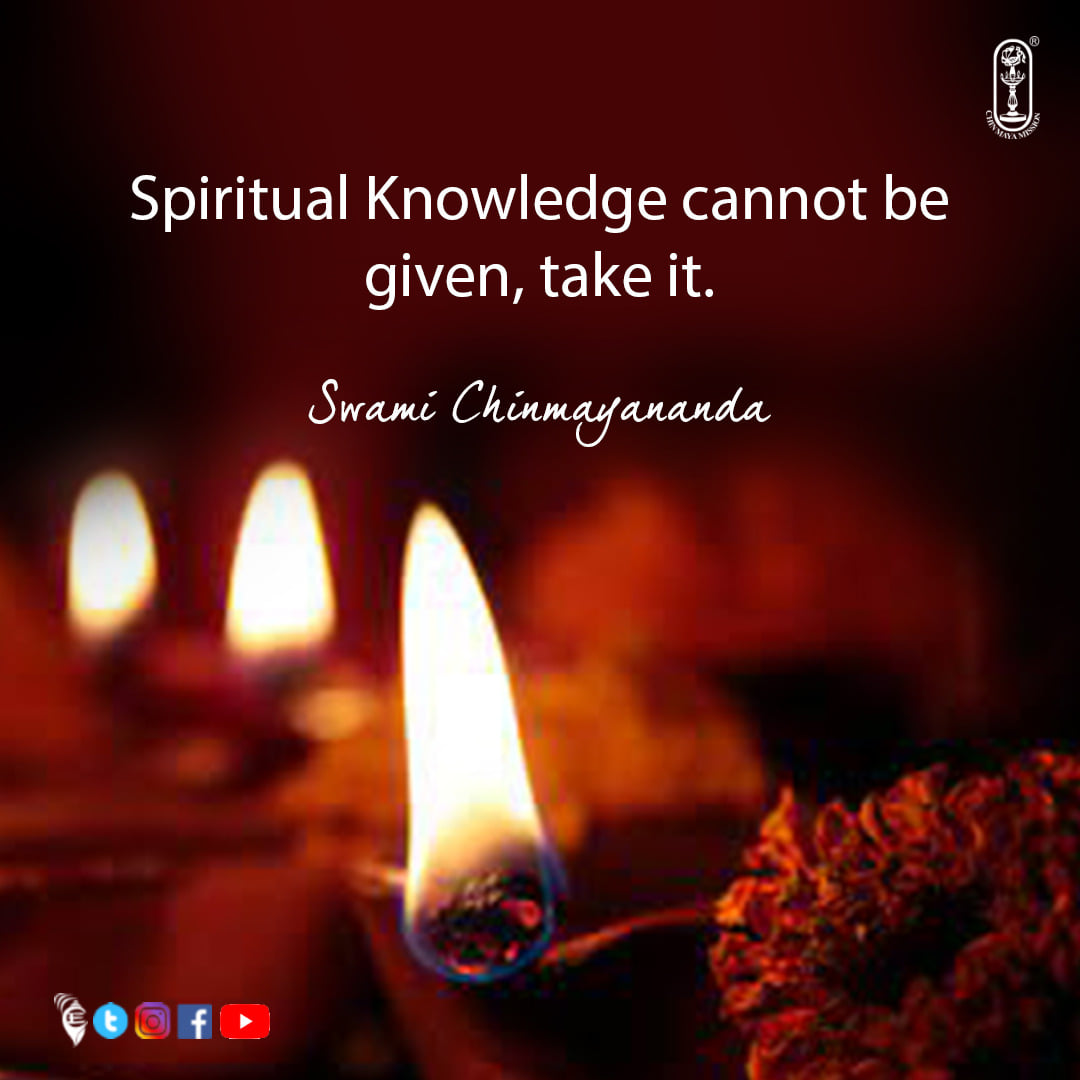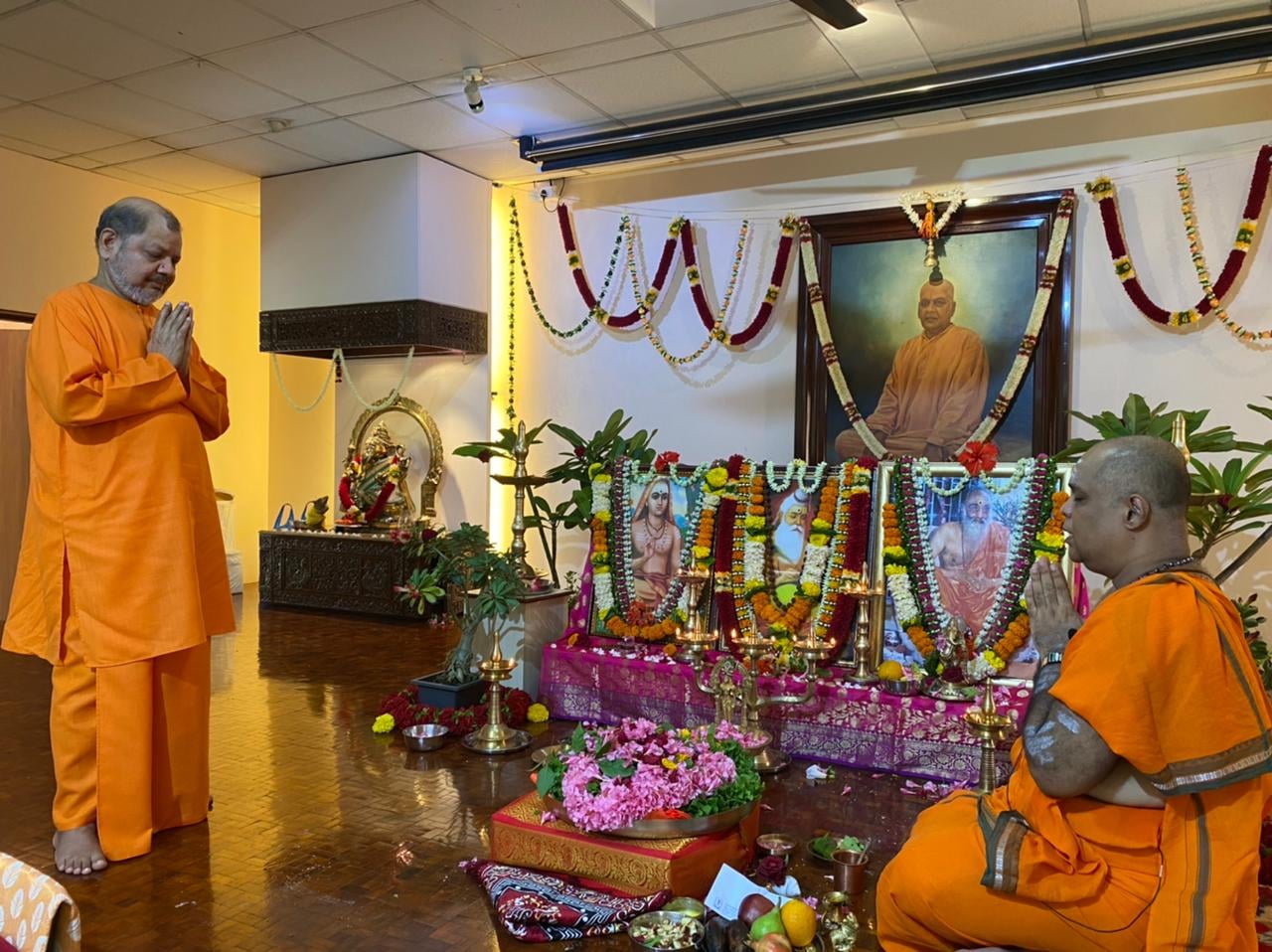Srimad Bhagavad-Gita : Chapter-17, Sraddha-traya-vibhaga-yogam : Slokam-7..
--------------------------------------------------------------------------------
----------------------------------------------------------------------------------
Wednesday, Septembert 08, 2021. 9:26. PM.
Srimad Bhagavad-Gita
Chapter-17. Sraddha-traya-vibhaga-yogam :
Slokam-7.
--------------------------------------------------------------------------------
Gita - Ch-17, Slo-7. :
"Aharas tv api sarvasya tri-vidho bhavati priyah
yajnas tapas tatha danam tesham bhedam imam shrinu."
------------------------------------------------------------------------------------------------------------------------
Translation :
āhāraḥ—food;
tu—indeed;
api—even;
sarvasya—of all;
tri-vidhaḥ—of three kinds;
bhavati—is;
priyaḥ—dear;
yajñaḥ—sacrifice;
tapaḥ—austerity;
tathā—and;
dānam—charity;
teṣhām—of them;
bhedam—distinctions;
imam—this;
śhṛiṇu—hear.
-------------------------------------------------------------------------------------------------------------------------
2.
Sarvasya aharah api tu = in each person, food habits;
tri-vidhh priyah bhavati = are of three types;
yajnah tapah danam tatha = sacrifice, austerity, and charity, these too;
tesham imam bhedam srnu = thus, I will tell you the difference of them, listen.
---------------------------------------------------------------------------------------------------------------------
Tatvam of the Slokam :
"The food persons prefer is according to their dispositions. The same is true for the sacrifice, austerity, and charity they incline toward. Now hear of the distinctions from me.
Even food of which all partake is of three kinds, according to the three modes of material nature. The same is true of sacrifices, austerities and charity. Listen, and I shall tell you of the distinctions of these."
------------------------------------------------------------------------------------------------------------------------
Commentary :
The mind and body impact each other. Thus, the food people eat influences their nature and vice versa. The Chhāndogya Upaniṣhad explains that the coarsest part of the food we eat passes out as feces; the subtler part becomes flesh; and the subtlest part becomes the mind (6.5.1). Again, it states: āhāra śhuddhau sattva śhuddhiḥ (7.26.2)[v1] “By eating pure food, the mind becomes pure.” The reverse is also true—people with pure minds prefer pure foods.
Lord Krishna now delineates that the attributes of the three gunas are commensurate with the three types of jivas or embodied beings. Those are the best who are sura or possess the light of consciousness are in sattva guna the mode of goodness. Those are the worst who are asura or without the light of consciousness and are in tama guna the mode of ignorance. Those who are intermediate are mixed with raja guna the mode of passion and tama guna. These forms continue even after achieving moksa or liberation from material existence as well as those who are forced to enter hellish existences. Quite distinct from both of these is paramatma the omnipresent Supreme Soul existing collectively with the atma or individual immortal soul which exists in all jivas and whose state of consciousness is far superior to even the mind. At least once in every human life this state of consciousness manifests and in rare circumstances is perceived within the etheric heart along with its transcendental form. This form projects luminosity and receives light from its continuous interactions with paramatma. This spiritual form should be meditated on with devotion and embraced.
Those who are of purified senses and spiritually evolved perceive that Lord Krishna is the ultimate reality and the Supreme Lord of all other lords are exclusively in sattva guna. These and only these can be considered devotees of the Supreme Lord Krishna and His authorised avatars or incarnations such as Rama, Vamana, Buddha, Narasingha and His expansions such as Narayana, Vasudeva and Vishnu as revealed in Vedic scriptures. Those who perform bhakti or exclusive loving devotional service to the Supreme Lord and His incarnations pleases Him very much and delights all who are endowed also with the divine nature such as Brahma, Shiva and others. Being blest by the presiding deity of knowledge Sri Laksmi-devi who is the eternal consort and feminine shakti or potency of the supreme lord one stays firmly situated in sattva guma and engage in pure worship. They will achieve moksa in their lifetime.
Those who are in doubt about the Supremacy of Lord Krishna and are wary of surrendering to Him and do not understand thet He is the Supreme Lord, find themselves gullible to follow inferior doctrines and receptive to worshipping perishable gods without ever understanding the actual taratamya or gradations involved, are rooted in raja guna and engage in worship of demoniac entities accepting them as their supreme being. In their next life they must suffer interminably in the foulest of hells.
Those who are indifferent and consider Lord Krishna as equal to other gods of other faiths, without using their intelligence to determine that the doctrines of all other faiths are missing knowledge of the atma or immortal soul, knowledge of karma, knowledge of reincarnation, knowledge of liberation and is beyond compare are drowning in tama guna and worship ghosts and spirits, abstract conceptions along with illusory beliefs. In the next life they will take birth as animals.
Those who consider the omnipresent Supreme Lord who pervades all existence and resides within the etheric heart of all living entities as less than other gods will go to obscure worlds of darkness. They will be born as pischasas or goblins and raksasas or demons.
Those who engage in extreme austerities according to the Vedic scriptures out of pride and arrogance for the desire of obtaining material rewards such as power, wealth, fame, etc. petition the demigods for various rewards and Sri Laksmi for wealth as if they were independently awarding the boons desired. Such ones fail to realise that whatever they have received has had to be sanctioned by the Supreme Lord.
Those who refrain from performing worship according to the ordinances and injunctions of the Vedic scriptures and yet do not engage in any activities prohibited by the Vedic scriptures will have the opportunity to achieve moksa if by the mercy of a devotee they happen to propitiate the Supreme Lord Krishna or any of His incarnations and expansions. By this they will free themselves from the illusory energy and eventually attain the Supreme Lord. Thus it is clear and not necessary to elaborate that one who is worshipping the Supreme Lord in accordance with the Vedic scriptures will definitely attain Lord Krishna without a doubt.
Having clearly described the demoniac characteristics to be rejected and avoided, Lord Krishna establishes the quality based gradations of activities performed in the three gunas or modes of material nature. Activities such as rituals, penance and charity if characterised with the quality of sattva guna are to be embraced but if they are contrarily characterised by the quality of raja guna the mode of passion or tama guna the mode of ignorance they are to be avoided. Lord Krishna commences with the gradations of food as food is the support of all life and the purity of the mentality is dependent upon the purity of the food. This is confirmed in Chandogya Upanisad VI.VI.III beginning apam somya piyam ananam which states: The essence of whatever food is eaten rises up and becomes the mind. From pure nourishment manifests a pure nature; for the mental disposition determines the quality of propitiation by rituals which is influenced by the guna one is situated in. The food of every human being is eaten according to circumstances regarding likes and dislikes which is governed by their innate nature corroborated by their particular preponderance to one of the three gunas only. There is no fourth choice or other alternative.
To illustrate the distinction between jivas or embodied beings in the three gunas or modes of material nature, Lord Krishna will explain in thirteen verses beginning with the threefold types of food that one is attracted to eat. Foods such as milk, fruits, rice, and vegetables are of sattva guna the mode of goodness. Foods such as garlic, onions, chillies and mushrooms are in raja guna the mode of passion. Foods such as meat, fish, fowl and eggs are in tama guna the mode of ignorance. Likewise rituals, charity and austerity are also threefold. Lord Krishna is revealing these facts so that people will give up foods in raja guna and tama guna as well as charity and austerity in such and instead fully embrace sattva guna in all activities.
From observation of the food that one eats it can determined which of the three gunas a jiva is situated in. The same observation holds true for the type of worship one engages in and for all activities one's position can be established. Those in sattva guna are observed humbly performing luminous activities in the mode of goodness. Those in raja guna can be seen ostentatiously engaging in fruitive activities for gain and profit and those in tama guna are noticed drearily enacting pagan rituals merely out of habit.
The Supreme Lord Krishna is known by the threefold symbols OM Tat Sat. His personal sound manifestation vibrates as the transcendental sound of OM. As He is omnipresent in every letter and syllable of the Vedas, OM is always chanted at the commencement of every Vedic ceremony and ritual. Therefore with the pronouncement of the word OM by the Vaisnavas and the brahmanas in salutation and glorification of Him, all rituals, ceremonies and propitiation proceed. The Vedic ordinances and injunctions are eternally established by Lord Krishna and are known as Sat denoting unlimited consciousness. Activities that do not propitiate Lord Krishna and begin with OM are practiced by the a-suras meaning those without the light of consciousness. All their efforts however prodigious are merely mundane and are known as a-sat having limited consciousness. Anyone pronouncing the word OM without initiation, without faith and without knowing the meaning thereof is also situated as an asura. Since the results of all Vedic rituals and ceremonies are allotted wholly to the Supreme Lord and moksa is awarded exclusively by the grace of His sanction, He is known as Tat and because He pervades everywhere internally and externally and possesses all auspiciousness, he is also know as Tat.
Absence of the Vedic ordinances and injunctions and avoiding recognition of the Supreme Lord have been determined to be similar. That which is practiced without recognition to the Supreme Lord is that which is practiced without following the Vedic scriptures and that which is practiced without following the Vedic scriptures is practiced without recognition of the Supreme Lord. The Shabda Nirnaya states: Making Lord Krishna the primal focus by which all activities revolve around is the method and the goal. The Paingi scripture confirms: Authentic scriptures are those that are established for the sole purpose of glorifying knowledge of the Supreme Lord Krishna and establishing communion with Him.
Food the support of life is also of three types by food's relationship with the three gunas or modes of material nature. Similarly yagnas or propitiation and worship by rituals is also of three types corresponding to the three gunas; as well as austerities and charity. The distinct gradations and variances found in the quality of each and every activity commences next.
To be continued ...
=======================================================================






Comments
Post a Comment